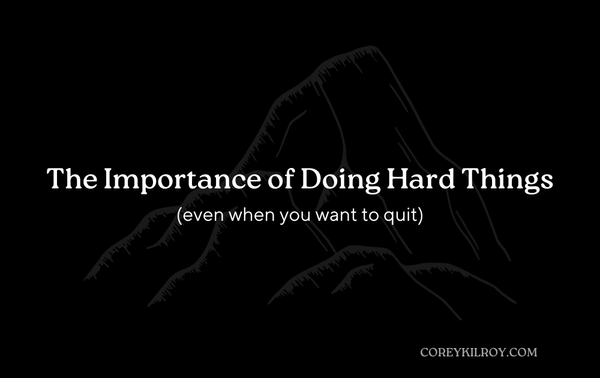10 Best Protein Sources You Can Eat
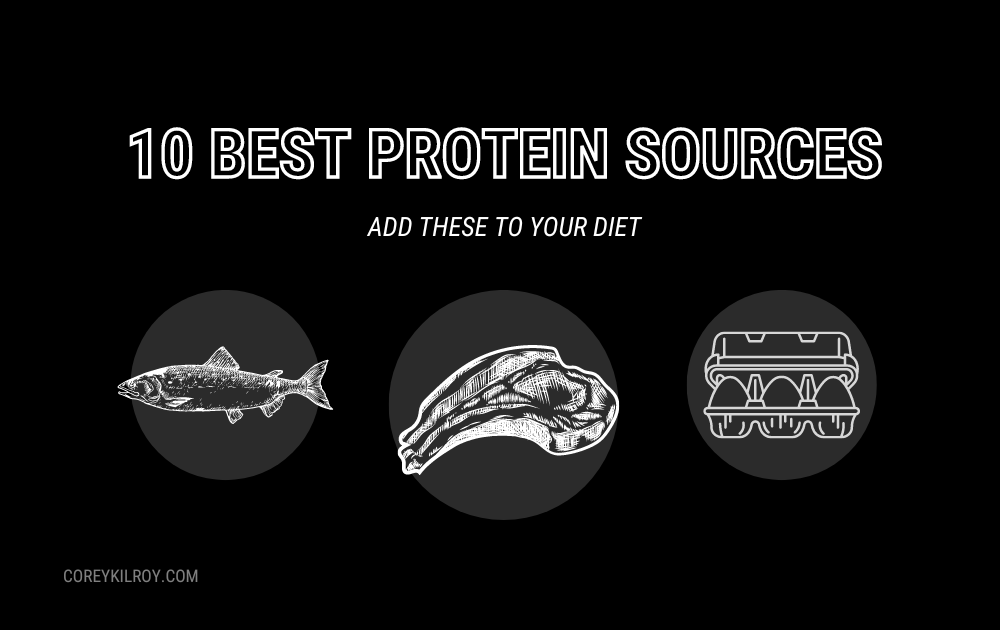
When I first started my fitness journey, all I cared about was one number…
The amount of “total calories” I consumed in a day.
Carbohydrates, fats, and especially protein macros were never of importance, only the number of calories I was putting into my body.
Yes, this dropped the number on the scale significantly, slowly losing ½ to 1 lb of weight every week, but I noticed I wasn’t really growing any muscle…
And this is true, you can lose significant weight by simply eating fewer calories, sticking to whole foods, and increasing cardio, but you’ll also lose a significant amount of muscle mass in the process.
Then I learned the importance of tracking macros and keeping protein intake high.
I learned that:
A calorie deficit + exercise = Weight loss
A calorie deficit + exercise + protein = Fat loss
Also, if your goal is to build muscle then it becomes even more crucial that you optimize your protein intake.
Let’s dive a little deeper…
Why Should You Be Consuming More Protein?
When it comes to protein intake, I believe there are 6 true reasons why you should be consuming more protein day-to-day.
1. Protein is a “building block” for your muscles
2. Protein Prevents Muscle Loss When Losing Weight
3. Protein helps keep you satiated throughout the day
4. Boost Metabolism
5. Helps Lower Blood Pressure
6. Helps You Stay Fit as You Get Older
If you’re not familiar, I dive deep into each of these 6 concepts in my “Why You Should Be Consuming More Protein” essay.
How Much Protein Do We Need?
There's been a ton of research around how much protein we need.
Studies show that 0.8 grams per kilogram of body weight is the most optimal.
If you're a very active individual and wish to gain more muscle, then 1-1.4 grams of protein per kilogram of body weight is most sufficient.
(To calculate your approximate weight in kilograms, divide your weight in pounds by 2.2.)
For example, a 150-pound person living an inactive lifestyle would need about 55 grams of protein a day, Sass says. But if that same person was doing regular cardio and strength-training workouts to build muscle, their protein needs would go up to about 150 grams per day.
Now, there are many protein sources to choose from.
Some are good and others are not so good, and it can get overwhelming trying to decide which is best for you.
So I want to share with you my top 10 protein sources to help make your decision a little easier.
They are based on 3 factors:
- Protein content
- Nutritional value
- Caloric value
The following list is not in any specific order.
The 10 Best Sources of Protein I Think You Should Eat
1. Pasture Raised Eggs
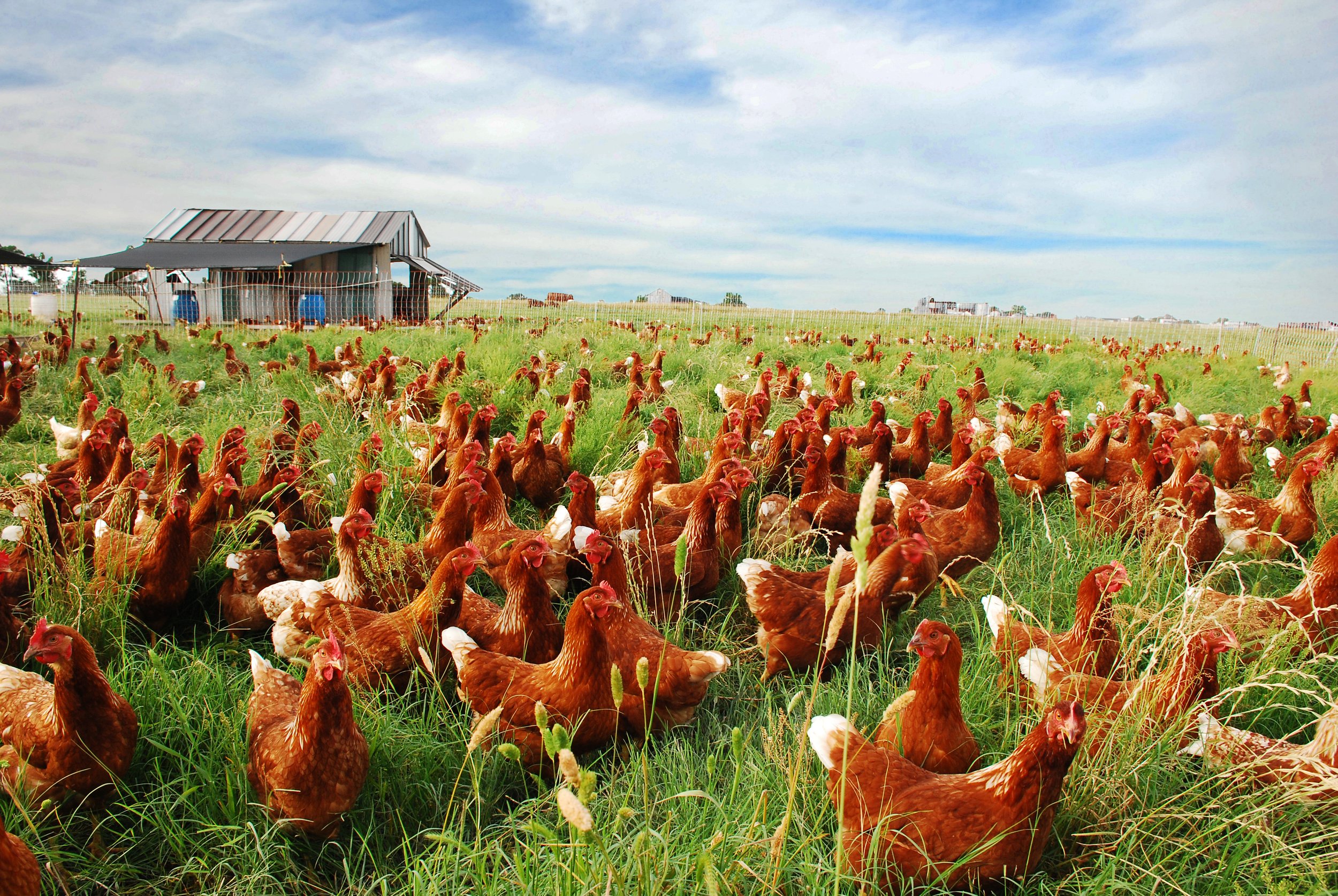
6g of protein (1 large egg)
Eggs are nature's multivitamin and while they have moderate levels of protein, they are packed with nutrients.
Eggs are naturally rich in vitamin B2 (riboflavin), vitamin B12, vitamin D, selenium, and iodine.
They also contain vitamin A and a number of other B vitamins including folate, biotin, pantothenic acid, and other essential minerals and trace elements, like phosphorus.
Additionally, egg yolks are a good source of choline, which is associated with reducing inflammation and maintaining memory and communication between brain cells.
You should be specifically focusing on pasture-raised eggs and I go in-depth as to why in my essay about the difference between Cage-Free, Free-Range, and Pasture-Raised Eggs.
2. Wild Caught Salmon
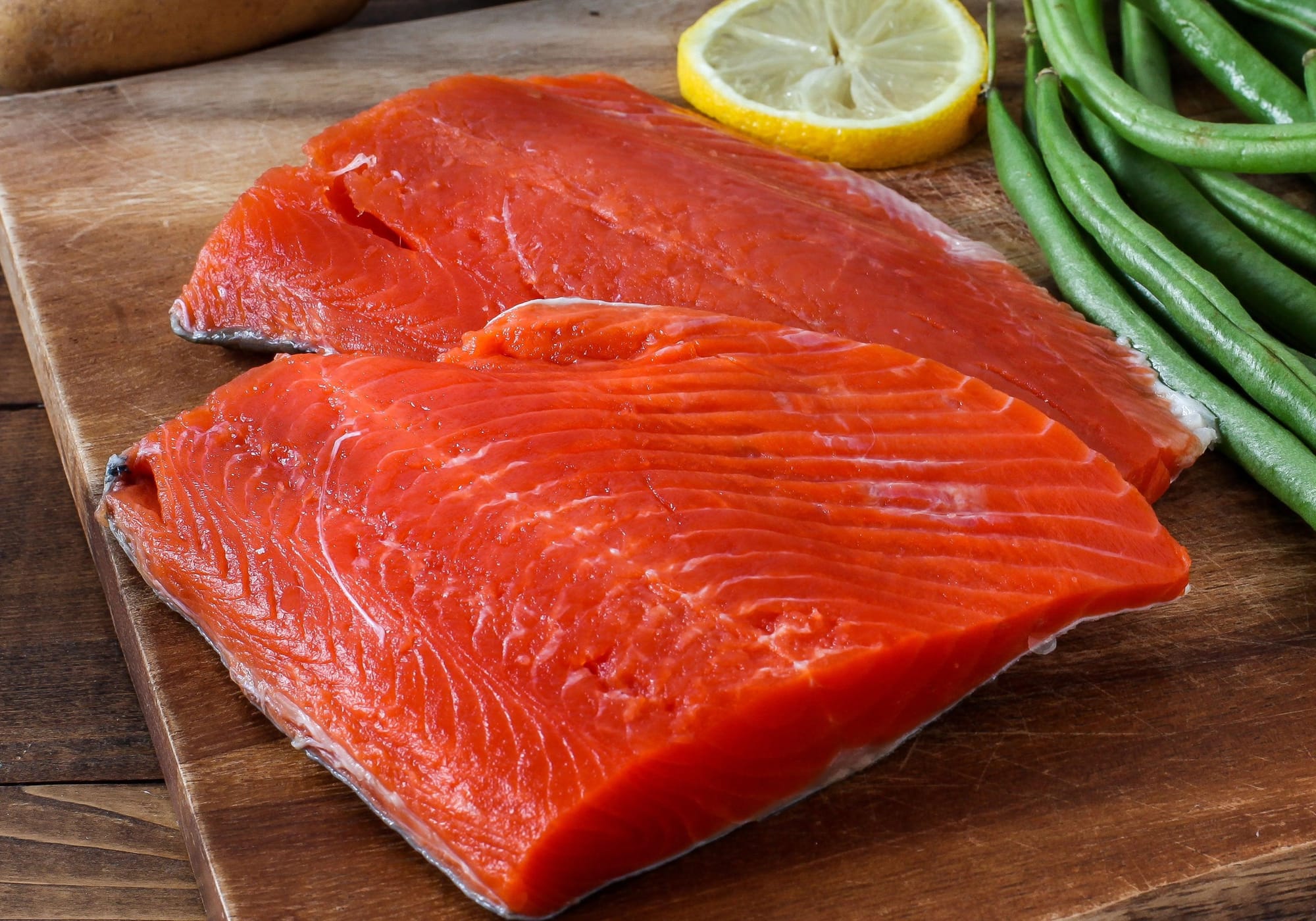
19g protein (3 oz serving)
Wild salmon, while being a great protein source, also has an excellent source of omega-3 fatty acids and essential nutrients like vitamin D + K, magnesium, and choline.
Wild salmon is an excellent brain food and provides these nutrients that are vital for everyday health.
Fatty fish are also considered to be one of the best heart-healthy foods you can eat due to their omega-3 fatty acid content.
I try and aim for at least 1-2 servings every week.
3. Grass Fed Steak/Beef
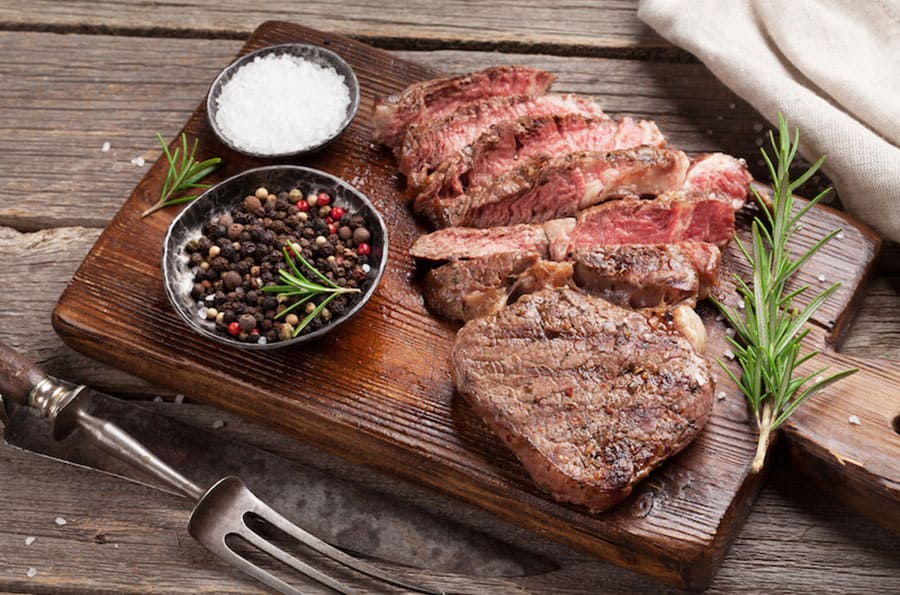
22 g protein (3 oz serving) of 93% lean ground beef
Grass-fed steak is high in protein and is jam-packed with essential nutrients.
100 g of striploin steak yields about 194 calories and a whopping 28 grams of protein.
I want to specifically promote grass-fed (and grass-finished, if possible) because these cows are fed natural grass and grain which is much healthier for us compared to the GMO corn and soy other cows are given.
It also fuels your body with key nutrients like zinc (which plays a role in immunity) and iron (which shuttles oxygen through your body), along with other nutrients like creatine, selenium, riboflavin, niacin, vitamin B6, vitamin B12, phosphorus, pantothenate, magnesium, and potassium.
4. Shrimp
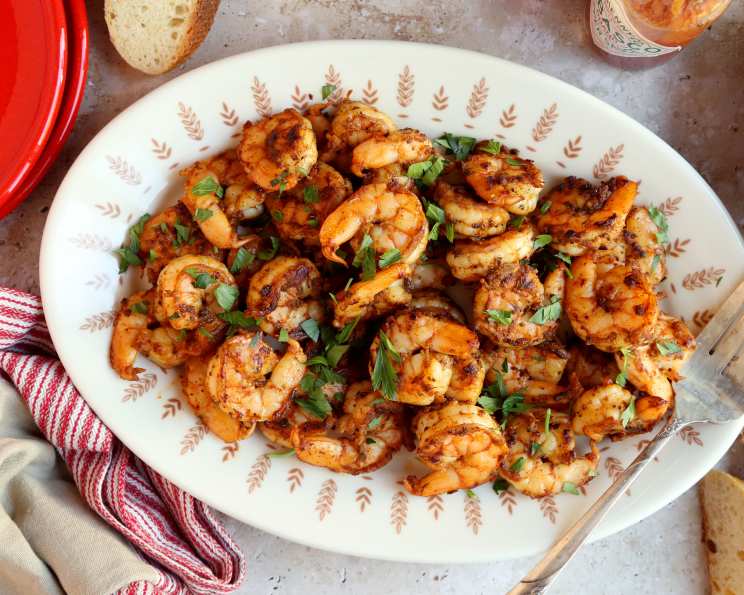
24 g of protein (100 g serving)
Shrimp is a very slept-on protein source.
It’s low calorie, high protein, and rich in nutrients.
Shrimp contain omega-3 fatty acids, selenium, vitamin B12, and antioxidants.
The primary antioxidant in shrimp is a carotenoid called astaxanthin, which is a component of algae (which is what shrimp like to eat).
Consuming astaxanthin is said to help protect against inflammation by preventing free radicals from damaging your cells and ultimately boosting brain health.
More on free radicals and brain health here.
5. Chicken Breast
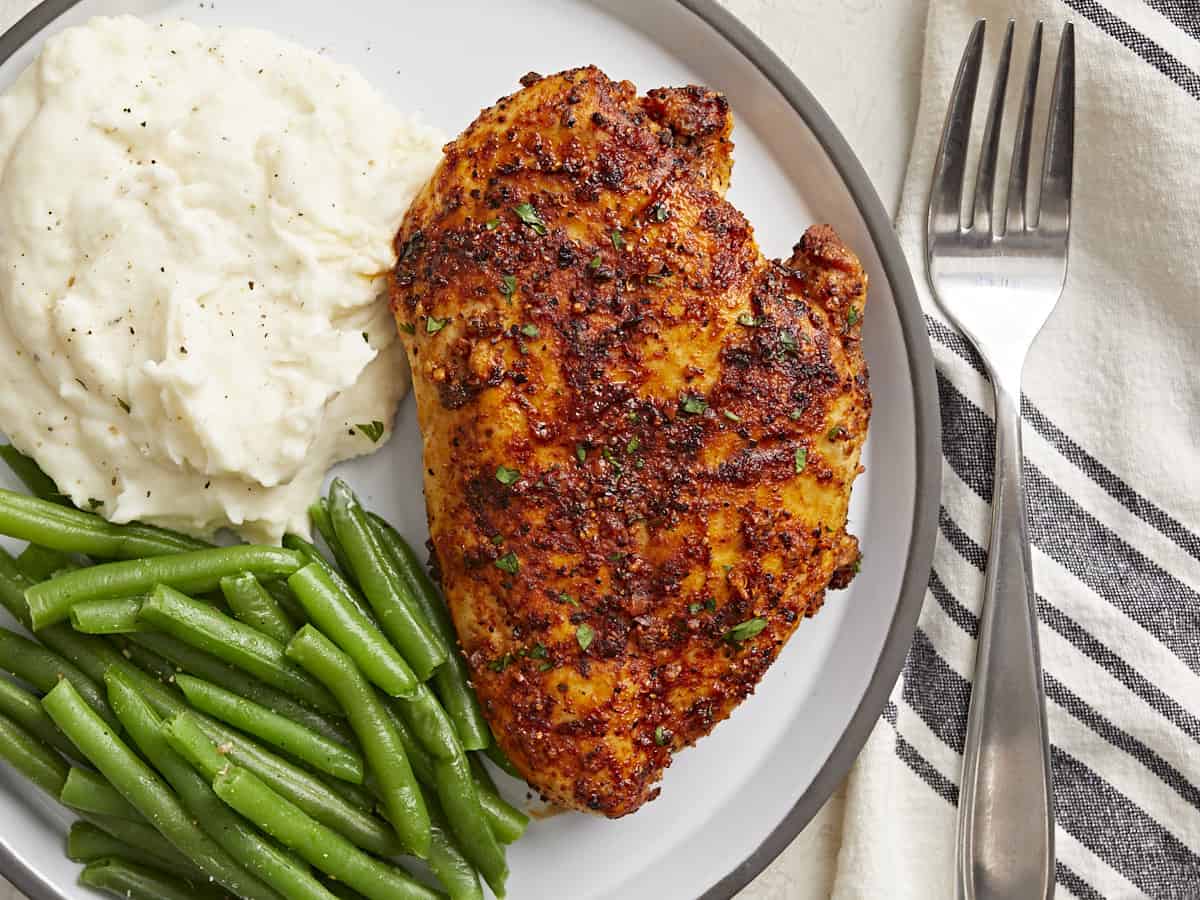
27 g protein (3 oz serving) of skinless chicken breast.
Every bodybuilder’s favorite protein source.
There’s a reason gym-goers favor chicken as their go-to source of protein in their meal preps.
Chicken breast is a relatively cheap buy at the grocery store and is high in protein, making it a no-brainer for those athletes seeking to boost their protein intake.
Chicken breast also contains essential vitamins and minerals that are important for overall health, including vitamin B12, vitamin D, and iron.
These nutrients are important for athletes who need to maintain high levels of energy and endurance during their workouts.
6. Beef Liver

20 g of protein (100 g serving)
Beef liver has gained a lot of popularity over the recent years and for good reason.
This is because it’s an organ meat known as one of the most nutrient-dense foods on the planet.
Beef liver is not only a great source of protein and moderate calories, but it contains many essential nutrients such as vitamins C, D, A, D, E & K, zinc, potassium, magnesium, phosphorous, manganese, iron, chromium, & all of the B vitamins.
It's also a great source of manganese (helps the body form connective tissue, bones, blood clotting factors, and sex hormones) and taurine (essential amino acid)
You can eat it raw (in tiny chunks), or cook it and eat it like steak.
Just make sure to marinate it with milk before cooking to get rid of the "gamey" aftertaste.
7. Low-Fat Cottage Cheese
:max_bytes(150000):strip_icc()/CottageCheese-99217feea01d4cd3b886474147f153a8.jpg)
24 g of protein (1 cup serving)
Cottage cheese is a natural source of protein that is easy to include in a balanced diet.
Using it in recipes like Creamy Spinach Dip or even protein shakes helps keep the protein content high without the hassle of cooking any meat.
I also love having it with some fruits for a sweet, high-protein snack that's easy on the go or at work.
8. Lentils

18 g of protein (1 cup cooked)
Lentils are a superstar plant-based source of protein.
They’re not only high in protein but are also packed with antioxidants, fiber, vitamins, and minerals.
Try adding them to your power bowls or in a lentil soup.
9. Chickpeas
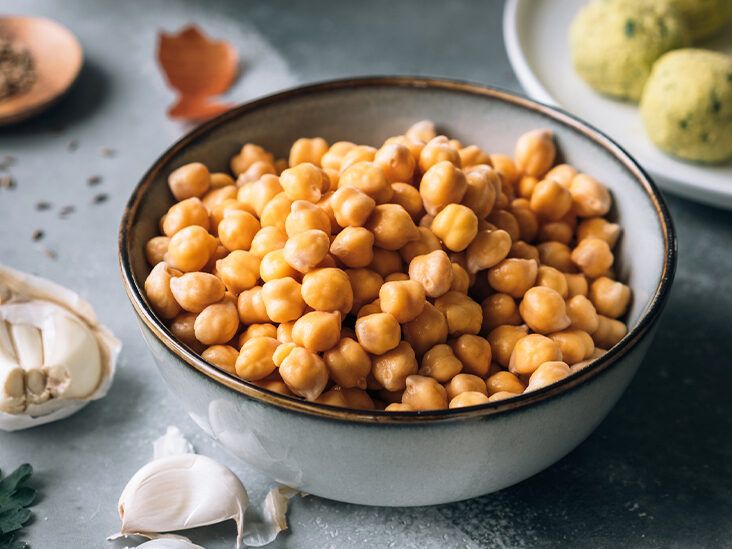
21 g of protein (100 g serving)
Chickpeas are another superstar plant-based protein source.
There’s a reason almost every vegan protein shake/powder contains chickpeas in their ingredient list.
If you’re lactose intolerant or allergic to dairy, chickpea protein powder is a great source of protein and easily accessible when you need it.
This is what I’ve been using as of late since dairy seems to be flaring up my acne recently.
You can even throw some chickpeas in your salads or as a hummus for an afternoon snack.
10. Whey Protein
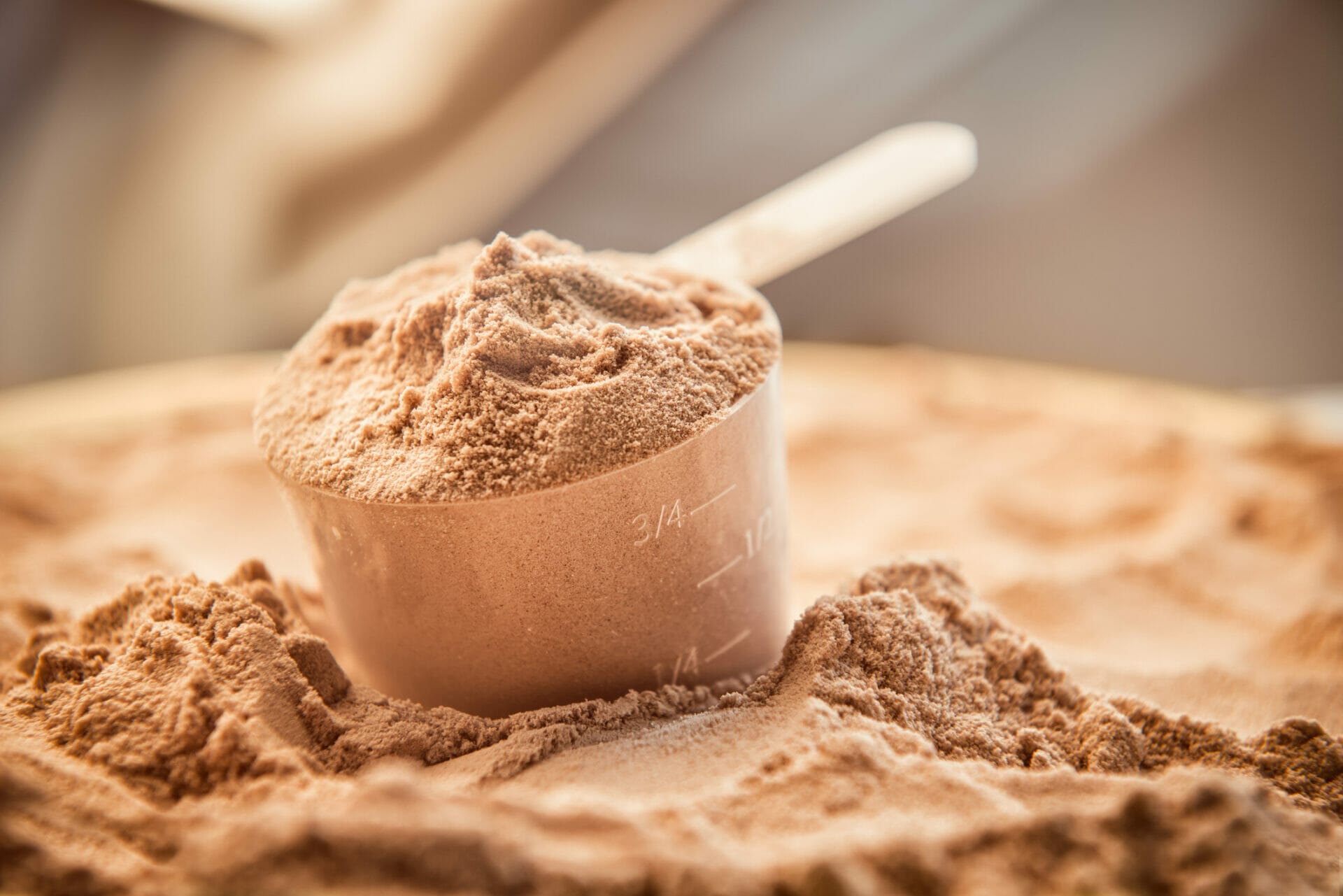
~25 g of protein (1 scoop - depending on the brand)
Ever since I started my fitness journey, whey protein has been in my supplement stack.
Whey protein, specifically whey protein isolate, is a very convenient source of protein to supplement your diet when in a pinch.
I firstly say that whey protein isolate is preferred because it is filtered and a more tolerable form of whey protein compared to whey protein concentrate which is less so.
I also say that whey protein is a great supplement because it is just that… a supplement to what should only be used once your diet is in check and you’ve mastered that.
Then when your diet needs a little extra protein, say after the gym, you can throw a scoop in a shaker cup or in some oatmeal to add some more to your diet.
It’s convenient, easy, and high in protein, which is why almost every gym-goer promotes it.
In the end…
Protein is an essential nutrient that everyone needs in their diet.
It can come in many forms which should make it easy when piecing together a diet that works for you.
Try these 10 foods out and let me know your thoughts.
Be well and keep pluggin’.
-C.

